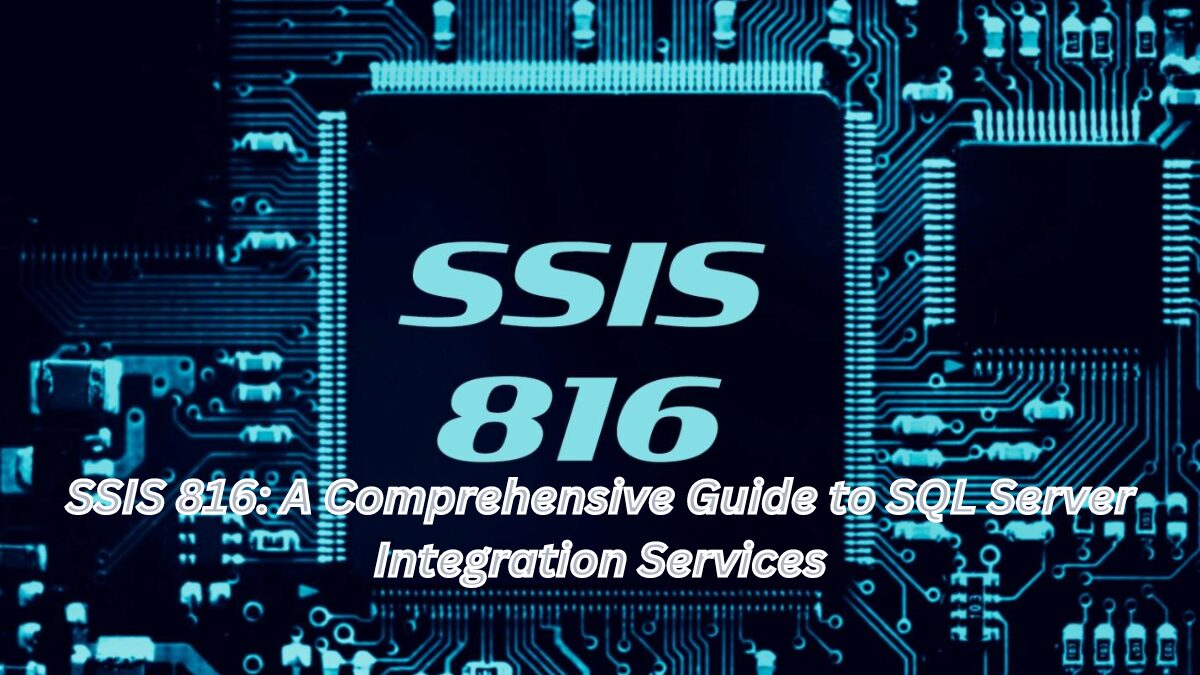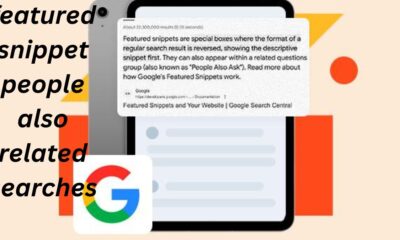Blog
Mastering Çeviri: Your Ultimate Guide to Translation Excellence

Introduction
Have you ever wondered what makes translation such a crucial skill in our interconnected world? The Turkish term “çeviri” translates to “translation” in English, and it encompasses the intricate process of converting text from one language to another. Translation is not just about swapping words; it’s about conveying meaning, culture, and context. Let’s dive deep into the world of çeviri and explore its various facets.
The Evolution of Translation
Historical Background
Translation has been an essential part of human communication for centuries. Ancient civilizations like the Egyptians and Greeks relied on translators to facilitate trade and diplomacy. The Rosetta Stone, a famous artifact, is a testament to the early importance of translation, featuring the same text in three different scripts.
Modern Translation Practices
Today, translation has evolved into a sophisticated field, driven by advancements in technology and a deeper understanding of languages. From literary works to technical manuals, translation is a vital tool that bridges linguistic divides and fosters global communication.
Types of Translation
Literary Translation
Literary translation involves translating works of literature such as novels, poems, and plays. This type of translation requires a deep appreciation of both the source and target languages’ literary styles, as well as an understanding of cultural nuances.
Technical Translation
Technical translation focuses on translating documents related to fields like engineering, IT, and science. Precision and accuracy are paramount here, as even a small error can lead to significant misunderstandings.
Legal Translation
Legal translation deals with legal documents, including contracts, court rulings, and statutes. It demands a thorough understanding of legal terminology and concepts in both languages to ensure the translated document is legally sound.
Medical Translation
Medical translation involves translating medical documents such as patient records, research papers, and pharmaceutical instructions. This type of translation is critical for patient safety and requires specialized knowledge in medical terminology.
Business Translation
Business translation covers a wide range of documents, including marketing materials, financial reports, and business correspondence. It plays a crucial role in international business operations, helping companies communicate effectively with global partners and customers.
Translation Techniques
Direct Translation
Direct translation, also known as literal translation, involves translating text word-for-word. While this method maintains the original structure, it may not always convey the intended meaning accurately.
Indirect Translation
Indirect translation, or free translation, focuses on conveying the overall meaning rather than sticking to the exact words. This approach is often used when the source text’s cultural context needs to be adapted to the target audience.
Dynamic Equivalence
Dynamic equivalence aims to produce a translation that evokes the same response in the target audience as the original text does in its audience. This technique prioritizes meaning and effect over literal accuracy.
Formal Equivalence
Formal equivalence, on the other hand, strives for a close match between the source and target texts in terms of structure and content. This method is commonly used in legal and technical translations where precision is crucial.
The Role of a Translator
Skills Required
A proficient translator needs a blend of linguistic skills, cultural knowledge, and subject-matter expertise. They must be fluent in both the source and target languages and possess excellent writing skills to produce clear and accurate translations.
Ethical Considerations
Translators must adhere to ethical standards, ensuring confidentiality, accuracy, and impartiality in their work. They should avoid introducing personal biases and strive to represent the original text faithfully.
Cultural Sensitivity
Cultural sensitivity is crucial in translation. Translators must be aware of cultural differences and ensure that their translations respect and accurately reflect the source text’s cultural context.
Translation Tools and Technology
CAT Tools
Computer-Assisted Translation (CAT) tools help translators work more efficiently by providing features like translation memory, terminology management, and automated quality checks. These tools can significantly enhance translation consistency and speed.
Machine Translation
Machine translation uses artificial intelligence to translate text automatically. While it has improved significantly, it still lacks the nuance and cultural understanding that human translators bring to the table.
Benefits and Limitations of Technology
Technology can boost productivity and provide valuable support, but it cannot fully replace human translators. The subtlety and depth of human language, along with cultural nuances, often require a human touch to be accurately captured.
Challenges in Translation
Language Nuances
Languages have unique expressions, idioms, and syntax that can be challenging to translate accurately. Understanding these nuances is essential for producing a high-quality translation.
Cultural Differences
Cultural differences can impact how a message is perceived. Translators must navigate these differences to ensure that the translation resonates with the target audience without causing offense or misunderstanding.
Contextual Meanings
Words can have different meanings depending on the context. Translators need to consider the context to choose the most appropriate translation, ensuring that the intended message is conveyed accurately.
Improving Translation Quality
Proofreading
Proofreading is a critical step in the translation process. It involves reviewing the translated text for errors and inconsistencies to ensure it is accurate and polished.
Peer Review
Having translations reviewed by other translators can provide valuable feedback and help identify areas for improvement. Peer review enhances the overall quality and reliability of the translation.
Continuous Learning
The field of translation is constantly evolving. Translators must engage in continuous learning to keep up with language changes, new technologies, and industry trends. This commitment to ongoing education ensures they remain at the top of their game.
The Future of Translation
Trends in Translation Industry
The translation industry is experiencing rapid growth, driven by globalization and the increasing demand for multilingual content. Trends such as localization, transcreation, and the use of AI are shaping the future of translation.
AI and Translation
Artificial intelligence is playing an increasingly significant role in translation. AI-powered tools can handle large volumes of text quickly, but they still need human oversight to ensure quality and accuracy.
The Role of Human Translators
Despite technological advancements, human translators remain indispensable. Their ability to understand context, capture nuances, and ensure cultural relevance is something that machines cannot replicate.
Conclusion
Translation, or çeviri, is a complex and vital skill that facilitates communication across cultures and languages. Whether it’s literary works, technical manuals, or legal documents, accurate translation ensures that information is accessible to a global audience. While technology continues to advance, the human touch remains crucial in capturing the full richness and depth of language. As the world becomes more interconnected, the demand for skilled translators will only grow, making this an exciting and dynamic field to be a part of.
Blunturi: Everything You Need to Know About This Versatile Toolhttps://blognownow.com/blunturi-everything-you-need-to-know-about-this-versatile-tool/
FAQs
1. What is Çeviri?
Çeviri is the Turkish term for translation, referring to the process of converting text from one language to another while preserving its meaning, tone, and context.
2. How do you become a translator?
To become a translator, one typically needs fluency in at least two languages, strong writing skills, and specialized knowledge in a particular field. Many translators also pursue formal education in translation studies or related disciplines.
3. What are the main challenges in translation?
The main challenges in translation include dealing with language nuances, cultural differences, and contextual meanings. Translators must navigate these complexities to produce accurate and culturally appropriate translations.
4. How does technology impact translation?
Technology, such as CAT tools and machine translation, can enhance the efficiency and consistency of translations. However, human translators are still needed to ensure quality, particularly when dealing with nuanced or culturally sensitive content.
5. What are the future trends in translation?
Future trends in translation include increased use of AI and machine learning, greater emphasis on localization and transcreation, and ongoing demand for human translators to handle complex and nuanced translation tasks.
Blog
Finley Aaron Love Lockwood: The Life and Legacy of Elvis Presley’s Granddaughter

Introduction
Finley Aaron Love Lockwood is a name that resonates with legacy and history. As the granddaughter of the legendary Elvis Presley, she carries a significant heritage that has shaped her life from the very beginning. This article delves into the fascinating story of Finley Aaron Love Lockwood, exploring her family background, early life, and the impact of her famous lineage.
Family Background
Finley is a descendant of the iconic Presley family, a name synonymous with rock and roll and cultural impact. Her grandfather, Elvis Presley, known as the King of Rock and Roll, left an indelible mark on the music industry and popular culture. Her mother, Lisa Marie Presley, continued the family’s musical tradition while also navigating the complexities of fame.
Early Life
Born on October 7, 2008, Finley Aaron Love Lockwood entered the world alongside her twin sister, Harper Vivienne Ann Lockwood. The twins were born to Lisa Marie Presley and her then-husband, Michael Lockwood. From their early years, Finley and Harper have been in the spotlight, garnering public interest due to their famous heritage.
The Presley Legacy
Elvis Presley’s influence extends beyond his music, shaping the lives of his descendants. For Finley, being a Presley means living up to a name that carries immense cultural weight. The Presley legacy is a double-edged sword, offering opportunities but also posing significant expectations.
Parents: Lisa Marie Presley and Michael Lockwood
Lisa Marie Presley, Finley’s mother, has had a multifaceted career as a singer-songwriter. Her personal life, including her relationships and struggles, has often been in the public eye. Michael Lockwood, Finley’s father, is a musician and producer. Together, they have provided a nurturing yet high-profile environment for Finley and her sister.
Grandmother: Priscilla Presley
Priscilla Presley, Finley’s grandmother, has been a guiding force in the family. Known for her own contributions to entertainment and philanthropy, Priscilla has played a significant role in Finley’s upbringing. Her influence helps bridge the generational gap, keeping Elvis’s memory alive while supporting her grandchildren.
Public Appearances
Finley and her twin sister made their first public appearances at a young age. Their presence at various family and public events has always attracted media attention. Despite the intense public scrutiny, the family strives to maintain a sense of normalcy for the twins.
Family Dynamics
Family is at the core of Finley’s life. Her relationship with her mother, Lisa Marie, is pivotal, with Lisa Marie’s experiences in the public eye providing valuable lessons. Finley’s bond with her twin sister, Harper, is equally strong, offering mutual support in their unique journey. The influence of her father, Michael Lockwood, adds another layer to her upbringing, blending musical talent and parental guidance.
Education and Hobbies
Finley’s education is a priority for the family, ensuring she has a well-rounded upbringing. Besides academics, she engages in various hobbies and extracurricular activities, which help her develop her interests and talents. Whether it’s music, sports, or arts, Finley’s activities are diverse, reflecting her multifaceted personality.
Challenges and Triumphs
Living up to the Presley name is no small feat. Finley faces the challenge of balancing her personal identity with the public’s expectations. However, she also enjoys the unique opportunities that come with her heritage. Triumphs in her young life include finding her own passions and navigating the complexities of fame with grace.
Media Attention
The media’s fascination with the Presley family extends to Finley. Stories and images of her often appear in tabloids and online platforms. While this attention can be overwhelming, it also highlights the enduring interest in Elvis Presley’s descendants. The family’s approach to media scrutiny is to provide as much normalcy and privacy as possible.
Social Media Presence
In today’s digital age, social media presence is almost inevitable. However, the Lockwood family is cautious about Finley’s online exposure. They prioritize her privacy and ensure that any online presence is carefully managed. This approach helps protect Finley from the potential pitfalls of social media fame.
Future Prospects
As Finley grows, speculation about her future increases. Will she follow in her grandfather’s musical footsteps, or carve out a unique path of her own? Whatever her choice, the legacy she inherits provides a strong foundation. The possibilities are endless, and the world watches with keen interest.
Conclusion
Finley Aaron Love Lockwood’s life is a blend of heritage, fame, and potential. As the granddaughter of Elvis Presley, she carries a name that opens doors while also presenting challenges. Her journey is one of navigating public attention, embracing her legacy, and forging her path. Finley’s story is still unfolding, and it promises to be as captivating as the Presley legacy itself.
Danielzinho: A Rising Star in the World of Football
FAQs
Who are Finley Aaron Love Lockwood’s parents?
Finley’s parents are Lisa Marie Presley, the daughter of Elvis Presley, and Michael Lockwood, a musician and producer.
What is Finley’s relationship with the Presley family?
Finley is closely related to the Presley family, being the granddaughter of Elvis Presley and Priscilla Presley. She has a strong bond with her mother, Lisa Marie Presley, and her twin sister, Harper.
How does Finley handle public attention?
Finley handles public attention with the support of her family, who prioritize privacy and normalcy. Despite the media interest, they strive to maintain a balanced and private upbringing.
Does Finley have a social media presence?
The Lockwood family is cautious about Finley’s social media presence, ensuring her privacy is protected. Any online presence is carefully managed to avoid the pitfalls of social media fame.
What are Finley’s future plans?
While Finley’s future is still unfolding, there is speculation about her potential career paths. Whether she chooses to follow in the Presley musical legacy or carve out her unique path, her heritage provides a strong foundation for success
Blog
SSIS 816: A Comprehensive Guide to SQL Server Integration Services

Introduction
Welcome to the ultimate guide on SSIS 816! If you’re delving into the world of data integration and management, understanding SQL Server Integration Services (SSIS) is crucial. SSIS 816 stands out as a robust tool for handling complex data transformation and migration tasks. But what exactly is SSIS 816, and why is it so important?
What is SSIS 816?
SSIS 816 is the latest version of Microsoft’s SQL Server Integration Services, a platform for building enterprise-level data integration and data transformations solutions. SSIS 816 offers enhanced features and improvements that streamline data management, making it a go-to for businesses looking to optimize their data processes.
Importance of SSIS in Data Integration
Data integration is vital for businesses to consolidate data from various sources, ensuring that they have a unified and accurate dataset. SSIS simplifies this process by providing powerful tools to extract, transform, and load (ETL) data across different databases and systems.
Understanding SSIS 816
SSIS 816 brings several new features and enhancements that differentiate it from its predecessors. These include improved performance, more extensive connectivity options, and enhanced scripting capabilities.
Features of SSIS 816
Some of the standout features include:
- Enhanced Data Flow Components: More efficient data processing capabilities.
- Advanced Scripting Options: Customizable scripting for tailored solutions.
- Better Integration with Azure: Streamlined cloud operations and hybrid scenarios.
Comparison with Previous Versions
Compared to earlier versions, SSIS 816 provides a more intuitive interface, faster processing speeds, and improved error handling mechanisms. These enhancements make it easier for users to create and manage ETL packages.
Installing SSIS 816
System Requirements
Before diving into installation, ensure your system meets the necessary requirements:
- Operating System: Windows Server 2016 or later
- Processor: 1.4 GHz or faster
- RAM: Minimum 4 GB (8 GB recommended)
- Disk Space: At least 2 GB of available space
Step-by-Step Installation Guide
- Download the Installer: Get the latest version from the Microsoft website.
- Run the Installer: Follow the prompts to install SSIS 816.
- Configure the Installation: Choose the components you need.
- Complete the Installation: Finish and verify the setup.
Core Components of SSIS 816
Understanding the core components of SSIS 816 is essential for creating effective ETL solutions.
Control Flow
Control Flow manages the workflow of your SSIS package, controlling the execution order of tasks.
Data Flow
Data Flow is where the actual data transformation happens, allowing you to manipulate and move data between sources and destinations.
Event Handlers
Event Handlers provide a way to manage actions triggered by package events, such as errors or completion.
Package Explorer
Package Explorer offers a tree view of all components in your package, facilitating easy navigation and management.
Creating Your First SSIS Package
Creating an SSIS package involves several steps:
Setting Up a New Project
- Open SQL Server Data Tools (SSDT): Create a new SSIS project.
- Define the Package: Name your package and set its properties.
Designing a Basic Data Flow
- Add Data Flow Task: Drag it onto the Control Flow canvas.
- Configure Data Sources and Destinations: Specify where data is coming from and where it’s going.
- Add Transformations: Include any necessary data transformation tasks.
Executing the Package
Run your package to ensure it functions correctly. Check for errors and verify the data has moved as expected.
Advanced SSIS 816 Features
SSIS 816 offers advanced features for more complex ETL scenarios:
Data Transformation Tasks
Use tasks like Lookup, Merge Join, and Aggregate to manipulate data efficiently.
Scripting and Customization
Script tasks and components allow for custom code to handle unique data processing needs.
Error Handling and Logging
Implement robust error handling and logging to monitor package execution and diagnose issues.
Data Sources and Destinations
SSIS 816 supports a wide variety of data sources and destinations, making it a versatile tool for data integration.
Connecting to Various Data Sources
Connect to databases like SQL Server, Oracle, and MySQL, as well as flat files, Excel, and web services.
Configuring Data Destinations
Specify where transformed data will be stored, whether it’s a database, a file, or another system.
Performance Tuning in SSIS 816
Optimizing the performance of your SSIS packages is crucial for handling large datasets efficiently.
Optimizing Data Flow
Use techniques like blocking transformations sparingly and optimizing buffer size settings.
Using Parallel Execution
Leverage parallel execution to speed up data processing tasks.
Managing Resources Efficiently
Monitor resource usage and adjust package configurations to balance performance and resource consumption.
SSIS 816 Security
Security is paramount in data integration. SSIS 816 provides several mechanisms to ensure data security.
Implementing Package Protection Levels
Choose appropriate protection levels to secure sensitive data within your packages.
Secure Data Transfer
Encrypt data transfers to protect against unauthorized access.
User Roles and Permissions
Define roles and permissions to control access to SSIS packages and components.
Integration with Other Microsoft Tools
SSIS 816 integrates seamlessly with other Microsoft tools, enhancing its functionality.
SSIS and SQL Server
Use SSIS for SQL Server to streamline data management tasks within your SQL environment.
SSIS and Azure
Integrate with Azure for cloud-based data processing and storage solutions.
SSIS and Power BI
Feed data into Power BI for advanced analytics and reporting.
SSIS 816 Deployment
Deploying SSIS packages requires careful planning and execution.
Preparing for Deployment
Ensure your packages are thoroughly tested and optimized before deployment.
Deploying Packages
Use the SSIS catalog and deployment wizard to deploy packages to your target environment.
Monitoring and Managing Deployed Packages
Monitor package execution and performance using SQL Server Management Studio (SSMS).
SSIS 816 in Real-World Applications
SSIS 816 is used in various industries to solve complex data integration challenges.
Case Studies
Explore real-world examples of SSIS in action, such as data migration projects and ETL processes in large enterprises.
Best Practices
Follow best practices for designing, deploying, and maintaining SSIS packages to ensure reliability and performance.
Troubleshooting SSIS 816
Despite its robustness, you may encounter issues with SSIS 816. Here’s how to handle common problems.
Common Issues and Solutions
Address issues like data truncation, connection failures, and performance bottlenecks.
Debugging Techniques
Use breakpoints, data viewers, and logging to identify and resolve issues in your SSIS packages.
Future of SSIS
The future of SSIS is bright, with ongoing developments and enhancements.
Upcoming Features
Look forward to new features and improvements in future SSIS releases.
Trends in Data Integration
Stay informed about trends like AI integration, cloud-based ETL, and real-time data processing.
Conclusion
SSIS 816 is a powerful tool for data integration and transformation, offering a wide range of features and capabilities. Whether you’re a novice or an experienced user, understanding and leveraging SSIS 816 can significantly enhance your data management processes.
The Ultimate Guide to Finding the Perfect CTO in New Canaan
FAQs
1. What is the primary purpose of SSIS 816?
SSIS 816 is designed to handle data integration and transformation tasks, making it easier to move and process data across various systems.
2. Can SSIS 816 be used with cloud services?
Yes, SSIS 816 integrates well with Azure and other cloud services, providing flexible and scalable data solutions.
3. How do I troubleshoot performance issues in SSIS 816?
Optimize data flow, use parallel execution, and monitor resource usage to troubleshoot performance issues in SSIS 816.
4. Is SSIS 816 suitable for real-time data processing?
While SSIS 816 is primarily designed for batch processing, it can handle real-time data processing with the right configurations.
5. What are some best practices for deploying SSIS packages?
Thorough testing, optimizing packages, and using the SSIS catalog for deployment are key best practices for deploying SSIS packages.
Blog
Mastering the Utopia Origin Map: Your Ultimate Guide

Introduction
If you’ve been diving into the enchanting world of Utopia Origin, you know how crucial it is to master the map. This comprehensive guide will walk you through everything you need to know to navigate efficiently, find resources, and thrive in this captivating game.
Understanding Utopia Origin
What is Utopia Origin?
Utopia Origin is a sandbox survival game that blends elements of exploration, crafting, and combat. Players are transported to a mystical island filled with unique creatures, hidden treasures, and challenging quests.
Game Mechanics and Objectives
The primary goal in Utopia Origin is to survive, build, and explore. You’ll gather resources, craft tools and structures, and embark on quests to uncover the island’s secrets.
Introduction to the Utopia Origin Map
Basic Layout of the Map
The Utopia Origin map is vast and diverse, featuring various regions each with unique biomes and landmarks. Understanding the basic layout is essential for efficient navigation.
Key Features and Landmarks
Landmarks such as mountains, rivers, and ancient ruins are scattered across the map, serving as reference points that help you orient yourself and plan your travels.
Navigating the Utopia Origin Map
Using the Map Interface
The map interface in Utopia Origin is user-friendly. You can zoom in and out to get a better view of your surroundings and mark important locations for future reference.
Importance of Navigation in Gameplay
Efficient navigation is key to success in Utopia Origin. Knowing your way around can mean the difference between life and death, especially when you’re in search of vital resources or trying to escape danger.
Regions and Biomes
Overview of Different Regions
Utopia Origin features various regions, each with its unique climate, flora, and fauna. From lush forests to arid deserts, each region offers different challenges and opportunities.
Unique Features of Each Biome
Understanding the characteristics of each biome can help you prepare adequately. For example, deserts are resource-rich but harsh, while forests provide abundant wood and wildlife.
Important Locations on the Map
Villages and Towns
Villages and towns are safe havens where you can trade, craft, and rest. Knowing their locations is crucial for long-term survival and progress.
Resource Hotspots
Certain areas on the map are rich in specific resources. Marking these hotspots can save you time and effort in your gathering endeavors.
Resource Management
Finding and Managing Resources
Efficient resource management is crucial. Learn where to find essential resources like wood, stone, and metal, and manage your inventory to avoid over-encumbrance.
Best Locations for Gathering Resources
Each region has its strengths. Forests are great for wood, mountains for minerals, and rivers for fish and water.
Quests and Objectives
How to Find Quest Locations
Quests are integral to your progress. Use the map to locate quest givers and objectives, ensuring you stay on track with your goals.
Navigating to Objectives Efficiently
Plan your route to avoid unnecessary detours. Utilize landmarks and shortcuts to reach your objectives faster.
Survival Tips
Safe Zones and Dangerous Areas
Identify safe zones where you can rest and regroup, and be aware of dangerous areas that require caution and preparation.
Tips for Surviving in Each Region
Each region has its own set of survival strategies. For instance, in colder climates, prioritize warmth and shelter, while in hotter areas, focus on hydration and shade.
Transportation and Travel
Methods of Transportation
Traveling across the Utopia Origin map can be done on foot, by mount, or using magical portals. Each method has its pros and cons.
Tips for Fast Travel Across the Map
Utilize mounts and portals to cut down travel time. Keep an eye out for hidden paths and shortcuts.
Building and Crafting
Ideal Locations for Setting Up Bases
Choose base locations strategically, close to resource-rich areas but away from high-traffic zones to avoid conflict.
Crafting Stations and Resource Hubs
Set up crafting stations and storage near your base for efficiency. Establish resource hubs to store excess materials.
PvP and PvE Zones
Understanding Player vs. Player Areas
PvP zones are areas where combat between players is allowed. Know their locations to avoid or engage in battles, depending on your strategy.
Safe Zones for PvE Gameplay
PvE zones are safer for players who prefer to focus on exploration and building. Use these areas to gather resources and complete quests without the threat of player attacks.
Hidden Treasures and Secrets
Locations of Hidden Treasures
The map is dotted with hidden treasures waiting to be discovered. Keep an eye out for clues and markings that lead to these valuable finds.
Secrets and Easter Eggs on the Map
Utopia Origin is filled with secrets and Easter eggs. Exploring thoroughly can reveal these hidden gems and enhance your gaming experience.
Advanced Navigation Strategies
Using Landmarks for Orientation
Learn to use natural landmarks like mountains and rivers for orientation. This skill is invaluable for navigating without relying solely on the map interface.
Tips for Efficient Map Exploration
Plan your exploration routes to cover maximum ground with minimum backtracking. Keep track of explored areas to ensure you don’t miss anything.
Conclusion
Mastering the Utopia Origin map is a game-changer. With these tips and strategies, you’ll be able to navigate efficiently, gather resources, and uncover all the secrets this mystical island has to offer. Happy exploring!
FAQs
What is the best way to find resources on the map?
The best way is to mark resource hotspots and revisit them regularly. Different regions offer different resources, so explore each biome thoroughly.
How can I travel quickly across the map?
Use mounts and magical portals for fast travel. Also, look for hidden paths and shortcuts to reduce travel time.
Where are the safe zones located?
Safe zones are usually around villages and towns. These areas offer protection from PvP encounters and provide essential services.
How do I find hidden treasures?
Pay attention to clues and markings on the map. Exploring thoroughly and following quest lines can also lead you to hidden treasures.
What should I do if I get lost on the map?
Use landmarks to reorient yourself. If you’re completely lost, consider heading to a known safe zone or using a mount or portal to travel to a familiar location.
-

 Blog5 months ago
Blog5 months agoVsco People Search
-

 Blog5 months ago
Blog5 months agoGoads on Nyt
-

 Blog5 months ago
Blog5 months agoFeatured Snippet People Also Related Searches
-

 Blog5 months ago
Blog5 months agoLillyFlower2003
-

 Pets5 months ago
Pets5 months agoSparrow Frost Black
-

 Blog5 months ago
Blog5 months agoBench Craft Company Lawsuit
-

 Blog5 months ago
Blog5 months agowhat is Chancene
-

 Blog5 months ago
Blog5 months agoArchivebate










